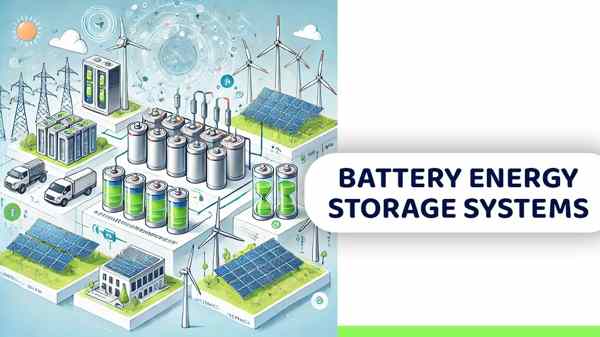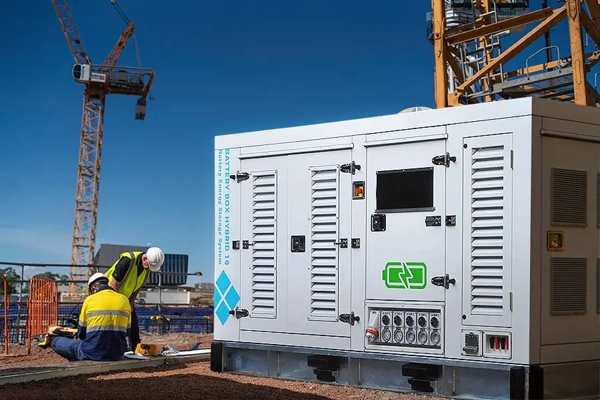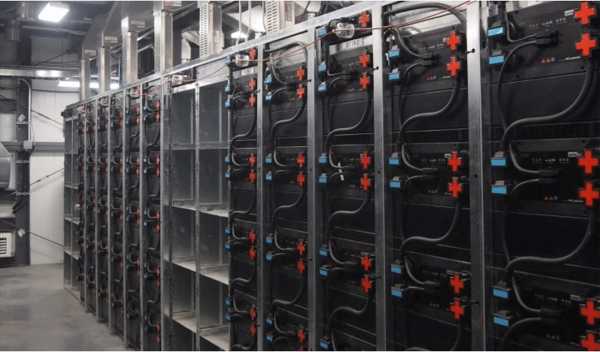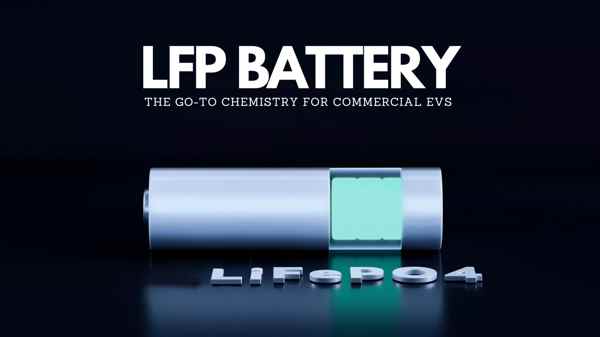Bess는 전기를 생성합니다?
태양 광 발전과 에너지 독립의 세계를 탐구 할 때, 당신은 끊임없이 약어를들을 것입니다 "Bess." 현대 에너지 시스템의 핵심 요소입니다, 그러나 근본적인 질문은 종종 발생합니다: 실제로 Bess를 수행합니다 생성하다 자체 전기? 진실하고 강력한 역할을 명확히하겠습니다.
간단한 대답은 아니오입니다, 베스 (배터리 에너지 저장 시스템) 전기를 생성하지 않습니다. 대신에, 다른 소스에 의해 생성 된 전기를 저장하도록 설계되었습니다., 태양 전지판 또는 공개 그리드와 같은. "에너지 은행"으로 생각하십시오 - 에너지가 풍부하고 저렴할 때 퇴적을합니다., 그리고 당신은 가장 필요할 때 철수합니다.

~에 Gycx 솔라, 우리는 베스를 현대 에너지 시스템의 중심으로 본다, 당신에게 당신의 힘을 제어하는 구성 요소. 저장 장치라는 것을 이해합니다, 발전기가 아닙니다, 놀라운 가치를 이해하는 첫 번째 단계입니다. 이 시스템에 대해 자세히 살펴 보겠습니다.
Bess Energy Store는 무엇입니까??
그래서, 베스가 "에너지 스토어 인 경우," 그것이 실제로 무엇을 의미 하는가? 내부에 어떤 구성 요소가 있습니다, 그리고 그들은 당신의 가정이나 사업을위한 힘을 유지하고 전달하기 위해 어떻게 협력합니까??
ㅏ 베스 에너지 스토어 완전한 것입니다, 지능적인, 전기 에너지를 안전하게 저장하고 파견하도록 설계된 통합 시스템. 배터리 이상의 것입니다. Bess는 조화에서 작동하는 몇 가지 주요 구성 요소로 구성됩니다.:
- 배터리 모듈: 에너지를 물리적으로 저장하는 핵심 단위 (일반적으로 LFP 리튬 이온 화학을 사용합니다).
- 배터리 관리 시스템 (비엠에스): 안전과 장수를 보장하기 위해 배터리를 보호하고 모니터링하는 전자 뇌.
- 전력 변환 시스템 (PC): 배터리에서 DC 전원을 AC 전원으로 변환하는 정교한 인버터, 충전을위한 반대도 마찬가지입니다.
- 제어 시스템: 전체 프로세스를 관리하는 소프트웨어, 설정에 따라 충전 또는 방전시기 결정, 태양열 생산, 그리드 상태.

더 깊이 다이빙하십시오: 에너지 은행의 해부학
Bess를 각 회원에게 중요한 역할을하는 첨단 기술 팀으로 생각하십시오.. 그만큼 배터리 모듈 저수지입니다. 그만큼 비엠에스 안전 관리자입니다, 배터리의 활력 징후를 지속적으로 확인합니다 (전압, 온도, 현재의) 스트레스로부터 그들을 보호합니다. 그만큼 PC (인버터) 다국어 번역기 및 게이트웨이입니다, DC 배터리와 태양 전지판과 가정용 가전 제품의 AC 세계 사이의 전력을 전환. 마지막으로, 그만큼 제어 시스템 팀 주장입니다, 에너지 전략 실행 - 말레이시아 NEM 아래에 과도한 태양 광 발전을 저장하든 (순 에너지 계량) 밤에 사용할 프로그램, 또는 순간 백업력 제공 순간 뇌우로 인해 정전이 발생합니다.. 이 모든 구성 요소는 원활하게 함께 작동하도록 설계되었습니다, 종종 매끄러운 벽 장착 장치 또는 전문 랙 캐비닛에 수용됩니다.. Gycx Solar에서, 우리가 설치할 때 BESS 배터리 에너지 저장 해결책, 우리는이 전체를 제공하고 있습니다, 에너지를 관리하기 위해 조정 된 팀.
Bess의 유지 보수는 무엇입니까??
전원 시스템에 대해 생각할 때, 일정한 연료 리필과 기름진 유지 보수가 필요한 시끄러운 발전기를 생각할 수 있습니다.. 어떤 종류의 유리1 현대입니다, 하이테크 베스2 필요하다?
현대 리튬 이온 베스의 가장 중요한 장점 중 하나는 그것이 사실상 유지보수가 필요 없는. 움직이는 부품이없고 완전히 밀봉되어 있기 때문에, 솔리드 스테이트 시스템, 위에 연료가 없습니다, 변화 할 기름이 없습니다, 정기적 인 엔진 테스트가 필요하지 않습니다. 주요 "유지 보수" 단순히 단순히 장치의 외부를 깨끗하게 유지하고 환기 포트를 막을 수 있도록하는 것입니다..

더 깊이 다이빙하십시오: "설정하고 잊어 버리십시오" 이점
BES의 유지 보수가 적은 특성은 주택 소유자와 기업의 주요 판매 지점입니다.. 다음은 "유지 보수"입니다" 실제로 보입니다:
- 사용자 책임 (최소):
- 깨끗하게 유지하십시오: 때때로 먼지 축적을 방지하기 위해 마른 천으로 Bess 인클로저의 외부를 닦아냅니다..
- 클리어런스를 확인하십시오: 가구를 확인하십시오, 상자, 또는 다른 품목은 장치의 공기 통풍구를 차단하는 방식으로 배치되지 않습니다.. 적절한 공기 흐름은 냉각에 필수적입니다, 특히 말레이시아와 같은 뜨거운 기후에서.
- 시스템 자체 유지 보수:
- 통합 비엠에스 실제 유지 보수 기술자입니다. 작동합니다 24/7, 모든 배터리 셀의 건강을 자동으로 모니터링합니다, 그들의 책임 균형, 모든 것이 최적의 매개 변수 내에서 작동하도록합니다.
- 시스템의 소프트웨어는 귀하에게 경고합니다 (종종 스마트 폰 앱을 통해) 또는주의가 필요한 이상을 감지하는 경우 설치 프로그램.
- 전문 검진:
- 자주 엄격하게 필요하지는 않지만, GYCX Solar와 같은 전문 설치 프로그램이 몇 년마다 시스템 점검을 수행하는 것이 좋습니다.. 이 동안, 우리는 전기 연결을 검사 할 수 있습니다, 팬 필터를 청소하십시오, 그리고 사용 가능한 펌웨어 업데이트를 설치하여 시스템이 최고 성능으로 계속 실행되도록하십시오..
발전기의 지속적인 유지와 비교합니다, Bess의 유지 보수는 상쾌하고 간단하고 핸드 오프입니다..
베스는 어떻게 생겼습니까??
"배터리 에너지 저장 시스템을 상상할 때," 당신은 무엇을 묘사합니까?? 코너에 산업용 자동차 배터리 스택? 현대 Bess의 현실은 훨씬 더 우아하고 컴팩트합니다..
가정 또는 소기업을위한 현대적인 Bess는 일반적으로 두 가지 주요 형태 요인 중 하나입니다.:
- ㅏ 벽 마운트 베스: 이것은 매끄러운 것처럼 보입니다, 현대 기기. 싱글입니다, 벽에 수직으로 장착 된 자체 포함 된 단위, 작은 캐비닛 또는 현대식 보일러와 비슷한 크기.
- ㅏ 랙 마운트 베스: 이것은 여러 모듈 식으로 구성됩니다, 직사각형 배터리 장치 (종종 "랙 배터리"라고합니다.) 깔끔하게 설치되거나 "쌓입니다" 전문적인 바닥재 장비 랙 또는 캐비닛으로.

더 깊이 다이빙하십시오: 형태는 기능을 따릅니다
두 가지 주요 디자인은 다른 요구를 충족시킵니다, 그렇기 때문에 GYCX Solar의 두 유형의 솔루션을 제공합니다.:
- 벽 마운트 시스템:
- 모습: 그들은 미학을 염두에두고 설계되었습니다, 깨끗한 제공, 현대 주택의 차고에 잘 통합되는 미니멀리스트 모양, 유틸리티 룸, 또는 야외도.
- 가장 좋습니다: 바닥 공간 절약, 많은 말레이시아 가정에서 큰 이점입니다. 표준 용량 요구에 이상적입니다 (일반적으로 단위당 5kWh ~ 15kWh).
- 랙 장착 시스템:
- 모습: 그들은 더 기능적입니다, 하이테크 모양이며 IT 서버에 사용 된 것과 유사한 캐비닛에 보관됩니다..
- 가장 좋습니다: 확장 성과 대용량. 총 스토리지를 늘리기 위해 랙에 더 많은 모듈을 추가하는 것은 매우 쉽습니다.. 이것은 높은 에너지 수요가있는 대형 주택 또는 상업용 응용 프로그램에 선호되는 솔루션입니다..
- 유틸리티 규모 시스템:
- 가장 큰 규모로, Bess는 선적 컨테이너처럼 보입니다. 이 거대한 컨테이너화 된 장치는 수백 개의 배터리 랙을 수용하며 전력 회사에서 전체 그리드를 안정화시키는 데 사용됩니다.. 이것은 핵심 기술이 얼마나 확장 가능한지 보여줍니다!
폼 팩터에 관계없이, 전문적으로 설치된 Bess는 깔끔합니다, 조직, 자체 포함 된 시스템.
BESS 시스템에서 사용되는 배터리?
실제로 상자 안에있는 것? 이러한 최신 에너지 저장 시스템을 강화하는 핵심 배터리 기술은 무엇입니까?? 배터리 화학의 선택은 안전을위한 가장 중요한 요소입니다., 장수, 그리고 Bess의 성능.
주거용 및 상업용 사용을위한 대다수의 현대 베스는 리튬 철 포스페이트 (LFP 또는 LIFEPO or) 배터리. 이 특정 유형의 리튬 이온 배터리는 가장 좋은 조합을 제공하기 때문에 고정 스토리지의 업계 표준이되었습니다. 안전, 매우 긴 사이클 수명, 우수한 열 안정성, 이전 납산 배터리 또는 기타 유형의 리튬 이온보다 훨씬 우수합니다..

더 깊이 다이빙하십시오: LFP가 전문가의 선택 인 이유
Gycx Solar에서, 고객의 안전과 장기 가치에 대한 우리의 헌신은 BESS 솔루션에서 LFP 기술을 독점적으로 사용하는 이유입니다.. 그것이 올바른 선택 인 이유는 다음과 같습니다:
- 우수한 안전: LFP는 모든 일반적인 리튬 이온 화학에서 가장 안전하고 화학적으로 안정적입니다.. 열 런 어웨이 임계 값이 매우 높습니다, 과열과 불을 붙잡는 데 매우 저항력이 있음을 의미합니다.. 이것은 집에 설치된 대형 배터리 시스템에 대한 협상 할 수없는 기능입니다., 특히 뜨거운 기후에서.
- 뛰어난 장수: LFP 배터리는 매일 사용하기 위해 제작 된 워크 호어입니다. 그들은 전달할 수 있습니다 3,000 에게 6,000+ 깊은 전하 차지 사이클, 서비스 수명으로 번역됩니다 10 에게 20 전형적인 태양 광 응용 프로그램에서 몇 년.
- 내구성과 성능: LFP는 합리적인 온도 범위에서 잘 작동하고 코발트를 포함하지 않는 강력한 화학입니다., 윤리적 소싱 우려와 가격 변동성과의 갈등 광물.
- 대안:
- 리드산: 오래된 기술. 무겁습니다, 수명이 훨씬 짧습니다 (3-7 연령), 덜 효율적입니다, 유지 보수가 필요합니다 (침수 된 경우).
- NMC (니켈 망간 코발트): 리튬 이온의 또 다른 유형, 가벼운 무게가 유리한 전기 자동차와 전동 공구에서 자주 발견됩니다.. 하지만, LFP보다 열 안정성이 낮고 사이클 수명이 짧습니다., 고정식 가정 저장에 덜 이상적입니다.
GYCX 태양 이야기: "우리는 종종 말레이시아 고객들에게 LFP의 고온 관용이 여기에서 주요 이점이라고 설명합니다.. 모든 배터리는 시원함을 선호합니다, LFP의 고유 한 안정성은 열대 기후에서 안전과 내구성의 여분의 여백을 제공합니다., 그렇기 때문에 우리가 가정 및 비즈니스 설치를 위해 신뢰하는 유일한 화학입니다."
그래서, Bess는 무엇입니까?? 완전합니다, 원할 때마다 사용할 수 있도록 에너지를 안전하게 저장하는 지능형 시스템. 유지 보수가 거의 없습니다, 10 년 이상의 수명, 그리고 매끄러운 외관, 현대적인 LFP Bess는 에너지 안보 및 저축을 찾는 모든 가정 또는 비즈니스에 강력한 추가 기능입니다..
어떻게 A에 대해 더 배우고 싶다면 BESS 배터리 에너지 저장 솔루션은 귀하의 요구에 맞게 조정될 수 있습니다, GYCX Solar의 전문가 팀이 당신을 안내하기 위해 여기에 있습니다.. 전문 상담을 위해 오늘 저희에게 연락하십시오!
